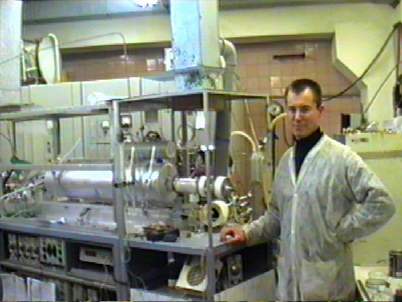
Press Article .19.11.2001
NATO Science for Peace Project
Near-Ultraviolet and Blue Light Emitting Diodes on AlGaN Heterostructures
(SfP 974505 – ‘UVLEDIS’)
The objective of this Project is the development of technology for commercial fabrication of new solid-state light sources: high-brightness light emitting diodes (LEDs) active in the near-ultraviolet (UV) and blue spectral ranges. These devices are planned to be based on novel semiconductor materials: aluminium and gallium nitride alloy compounds.
The project started in April 2001 is a collaboration between Texas Tech University (Lubbock, USA), St. Petersburg Crystal Growth Research Center, Russia, Soft-Impact Ltd. (St. Petersburg, Russia), and Moscow Optel company (Russia). The end-users are two large Russian optoelectronic companies, Proton and Start, responsible for the production and commercialisation of the end-product.
The project is resulting in an excellent co-operation between science and the industrial end-users. There is no doubt that the new LEDs and related products will have a commercial success on the Russian market. In the coming months opportunities for the external market will be investigated.
The economical and social importance of the Project UVLEDIS is defined by both high potential (economical, ecological and technical) of the proposed technical approach and numerous applications of blue and ultraviolet LEDs with economical, ecological and social impacts (full color displays, full color copy machine and scanners, railway blue-color light signals, artificial lights for households, car interiors, safety flashlights, light sources for emergency workers and vehicles, mining operations, underwater work, UV-light sources for medicine, compact banknote testers, portable criminalist laboratories, solar blind or hidden optical-electronic systems, compact UV-light lamps for luminescence microscopy and compact spectroscopy analyzers for express detection of complex organic mixtures such as narcotics, proteins including human blood, medicine compounds etc.). The group III nitride-based LEDs market growing very strongly (30-50% per year) is estimated to exceed $3 billion by 2003. The Project will lead to a technical breakdown in group III nitride-based light sources by new LEDs products, higher LED performance and about 3-times LED price reduction due to cost effective fabrication method. It is very important for Russian LED market, because the current price level of the blue LEDs is too high.
In this respect, the project is being presented at the 5th Russian Conference on Group-III Nitrides and Related Devices (Moscow, November 2001).

Young scientist Mr.
Oleg Ledjaev performing LED growth process.